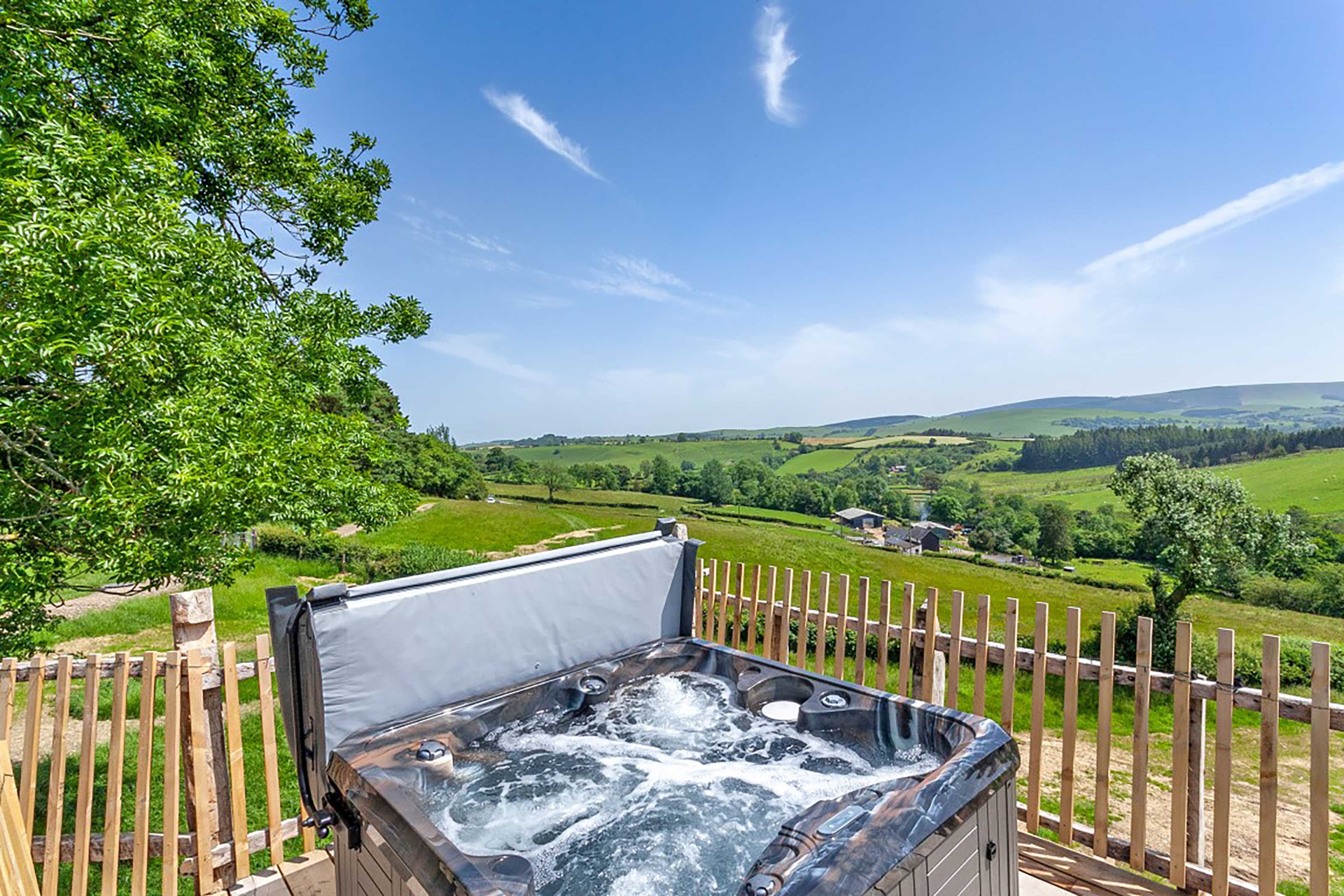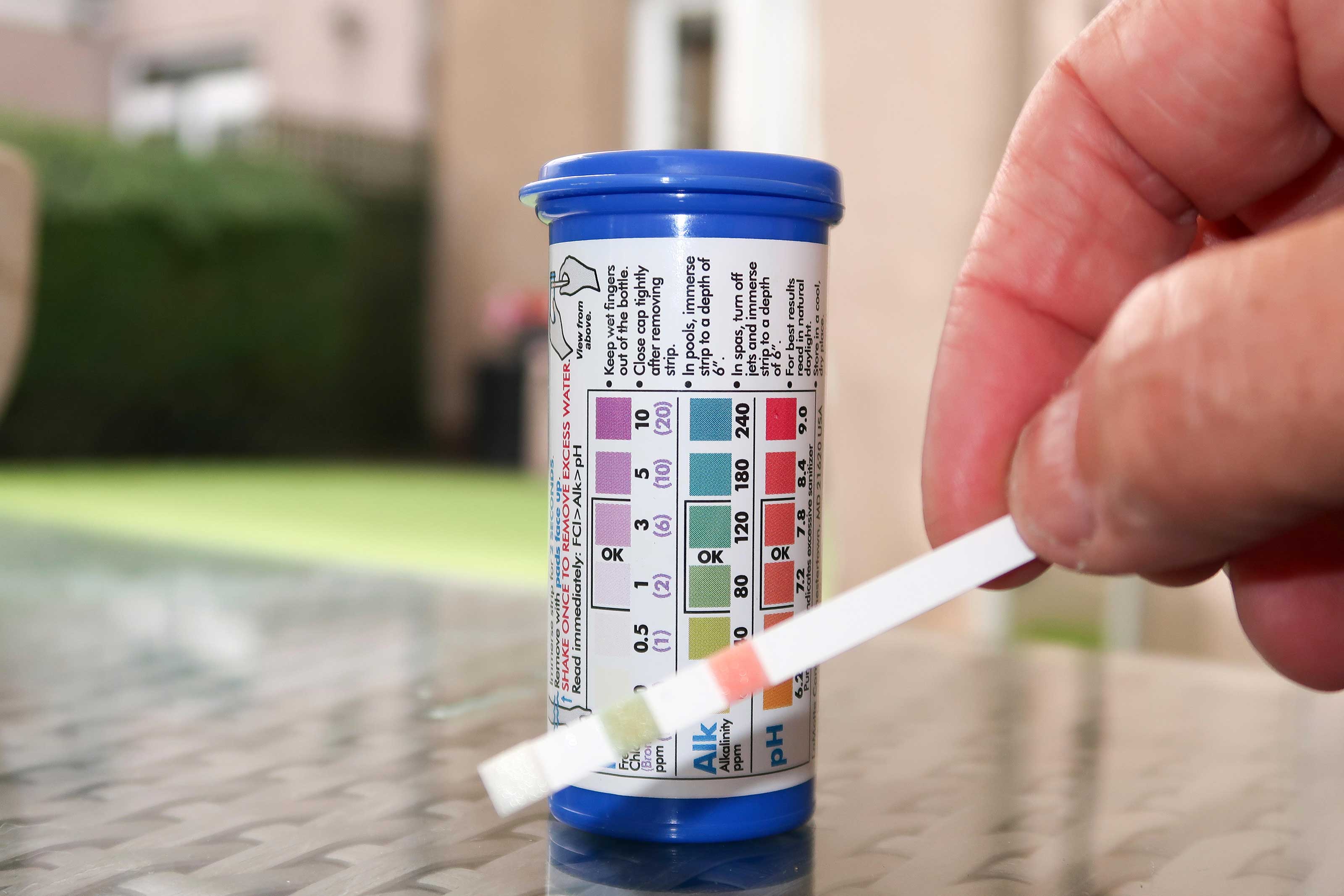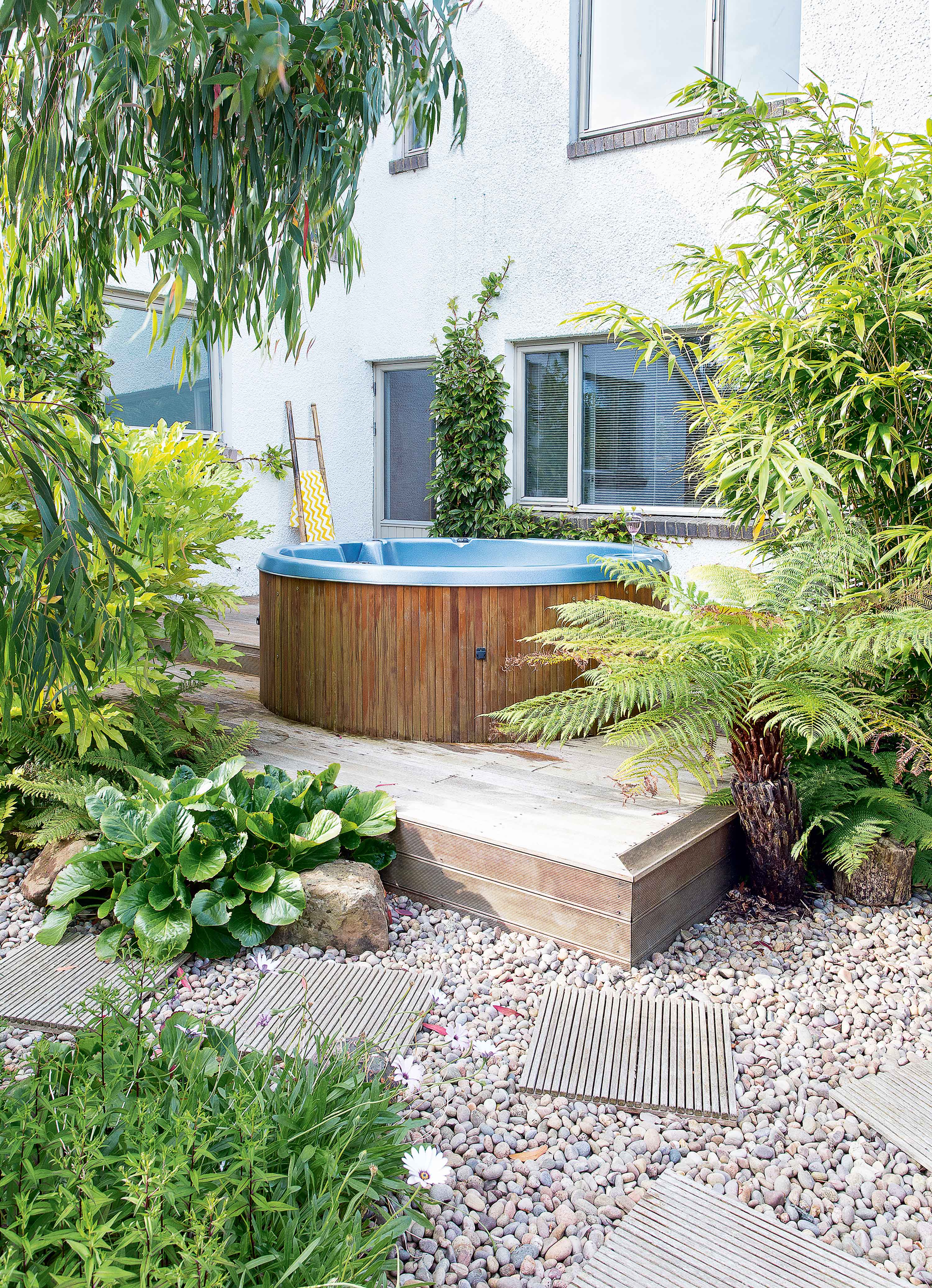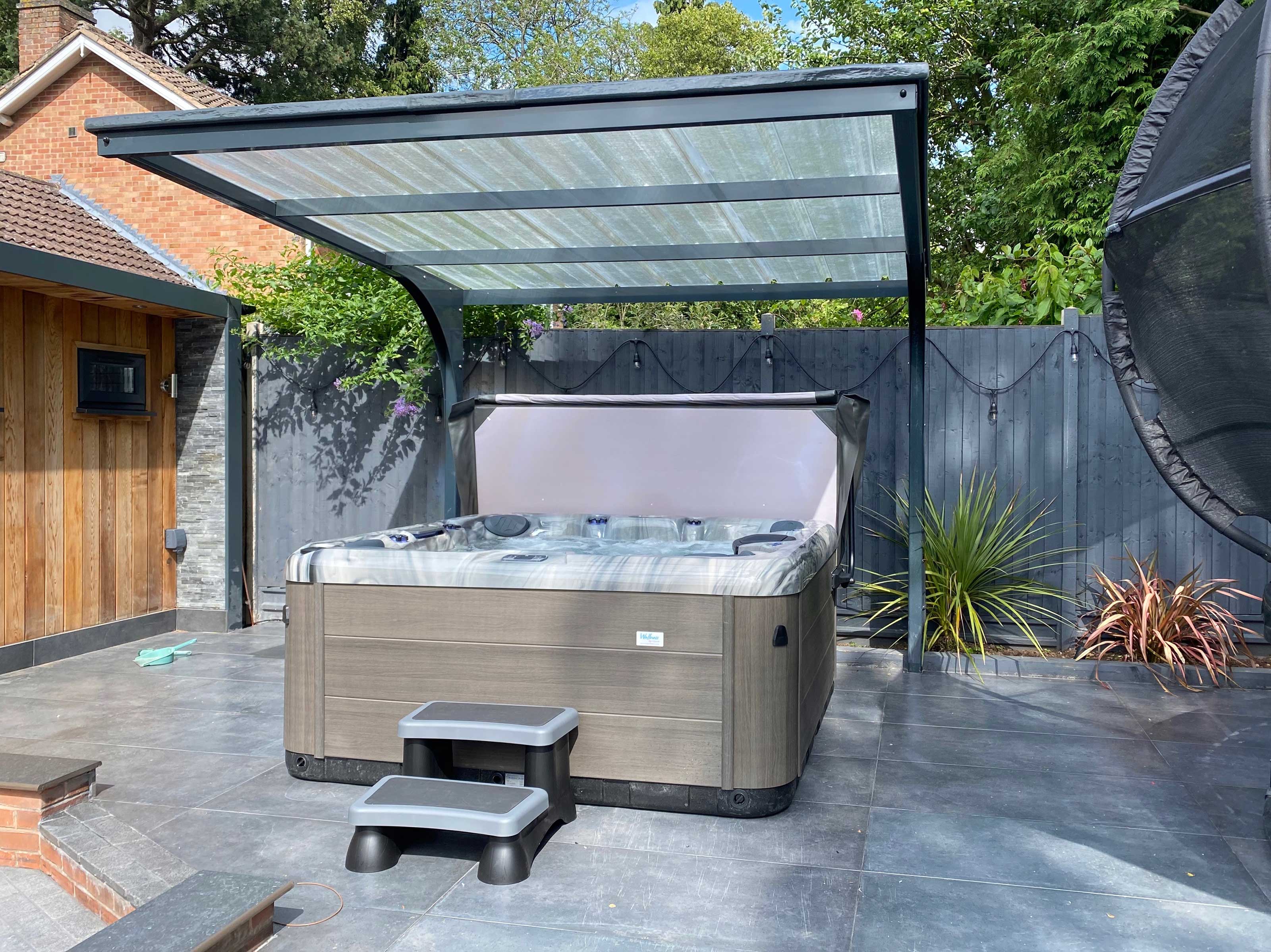Hot tub maintenance: how to look after a hot tub in your backyard
This expert advice on hot tub maintenance will help to keep your garden spa clean and in tip-top condition


Looking for tips on hot tub maintenance? You've come to the right place. Most people would agree that a warm, bubbling bath out in the fresh air that's yours and yours alone is a wonderful thing. But if you don't look after it properly, it can quickly lose its appeal.
Even if you have one of the very best hot tubs, lying back in sludgy, cloudy water definitely won't match up to your dreams of blissful relaxation. And we doubt that forking out on expensive repairs after a few months will, either. But keeping your tub in tip-top condition isn't really that hard, once you know how. We asked the experts at BISHTA (The British and Irish Spa and Hot Tub Association) to share their top tips for hot tub maintenance, to help you keep your outdoor spa a calming space rather than a chaotic one.
Hot tub maintenance: 8 simple tips from the experts
The team at BISHTA share their typical sample regime of hot tub maintenance below. As they explain, these processes will help to 'keep your spa water safe and crystal clear, minimize the amount of time and money you spend on it, and maximize the time you spend enjoying it.' A win on all accounts.
However, they do advise to check with your retailer for the exact regime for your hot tub, as some filter systems vary by manufacturer.

1. Buy from a reputable dealer
'The first step to low-cost and straightforward hot tub maintenance is buying a quality product from a reputable dealership,' says BISHTA. 'As well as selling high quality, reliable products with good on-site parts and labor warranty, a reputable dealer should also be knowledgeable and offer straightforward water care advice.' In the UK, these should ideally match the current BISHTA standards.
'If they can't, be very wary of your dealings with such a company,' continues BISHTA. 'Sadly, there are a few unscrupulous firms, particularly some internet-only importers of sub-standard products, who offer very poor or no water care advice at all.'

2. Keep your chemicals level
Okay, so you've invested in your hot tub ideas using a trusted dealer, and your backyard has been transformed into the chill-out zone of your dreams. Now what? Well, to kick things off with your hot tub maintenance regime, it's important to get into the habit of regularly testing the water. And by regularly, we mean daily. This will help you ensure that the water chemistry is properly levelled – from the sanitizer amounts (normally chlorine or bromine), to the pH rating. Improperly-balanced levels can have damaging effects – not just to the hot tub itself, but also to your health.
'Always test the water before use to ascertain pH and sanitizer readings,' says BISHTA. Just as you do for pool maintenance, this can be done with simple strip tests. 'Add required chemicals, as necessary, to correct any out-of-parameter readings, according to the manufacturer's directions on the packaging,' they continue. As a general guide, they recommend that pH should be maintained at a level of 7.0 to 7.6 – the closer to 7.0, the better.
'Do not check pH for at least 20 minutes after the hot tub was last used to allow time for all bubbles to dissipate,' they add.

In terms of sanitizer, BISHTA suggests the following measurements as a guide:
- If using bromine, bromine residual should be maintained at 2 to 4mg/l (ppm)
- If using inorganic chlorine (usually sodium hypochlorite or calcium hypochlorite), maintain the chlorine residual at 2 to 4mg/l (ppm)
- If using organic chlorine (usually stabilized chlorine such as DiChlor or Tri-chlor), maintain chlorine residual at 3 to 5 mg/l (ppm)
If you're using bromine tablets, you'll also need to check the dispenser every day, adding more if necessary.
Don't forget about total alkalinity too. BISHTA recommends this to be maintained at the industry parameters of 80 to 160 ppm. A dedicated total alkalinity increaser can be used to balance it out, should it dip too low.
For safety, remember to always store, handle, and add hot tub chemicals according to the directions on the manufacturer's packaging, they add.
3. Add further chemical treatments monthly
Along with the day-to-day testing and levelling that's important with hot tub maintenance, there are also some additional processes which need to be done on a monthly basis (or more frequently depending on amount of use).
Firstly, you will want to add a clarifying agent, says BISHTA. This will help to maintain water clarity, and should be used according to the instructions on the label. It might not always be needed, they add, however may be required after a party or a period of heavy use.
You can also add a 'Scale & Stain Inhibiting' agent, says BISHTA. Again, this helps to maintain water clarity and also prevents scale formation. However, do not carry this out on the same day that you add the clarifying agent, they add.
- If you're looking for backyard pool ideas to bring into your plot, our feature is sure to inspire

Shock dosing (also known as 'oxidizing') your hot tub is another job that needs doing at least once a month – often more. You will need to use specified hot tub shock treatments to do this, and there are two types: chlorine and non-chlorine. Chlorine will sanitize the water, helping to eliminate waste after heavy use. This will work to eliminate bacteria that may have developed a resistance to the normal levels of sanitizer, and will also oxidize biological impurities in the water. As well as doing this monthly as part of your general maintenance regime (or more frequently if needed), it's also recommended to shock your hot tub upon initially filling it with water. However, don't use chlorine shock treatments every time you shock the pool as it can be tough on the plumbing if overused.
Non-chlorine shock is gentler and is good for clearing up slightly cloudy water, so can be used more frequently. Check the packet, but usually using it at least once a week will be fine if needs be.
You normally have to wait a short while to use the hot tub again after a shock treatment. For non-chlorine treatments, this can be just 20 minutes or so, but for chlorine doses, it can be 24 hours. Again, check the instructions on the label for guidance, and test the chlorine levels to be sure the water is safe before getting in.
- Looking to upgrade your spa for a spot of swimming? Our guide on pool design ideas has lots of top tips for planning your own

4. Keep the water well-circulated
Keeping your hot tub's water circulating through the filters helps to keep it clean. Many designs have an automated circulation schedule installed, which means it will automatically filter all the water in the tub once or twice a day.
If yours doesn't have this, then it's a good idea to turn it on for around 15–20 minutes twice a day, explains Swim University. This is an important part of your hot tub maintenance routine as it will keep the water refreshed.

5. Clean out the filters
Speaking of filters, don't forget that after all that hard work refreshing your water, they'll need a clean. After all, keeping things clean is one of the simplest ways to avoid expensive maintenance repairs down the line.
All you need to do is remove the pleated filter cartridge (ensuring the power to the hot tub is off beforehand) before soaking it in a specific cartridge cleaner solution that is both acidic and a degreaser, says BISHTA. This avoids the need for 'hosing off', the team continue, which risks spreading Legionella bacteria due to the aerosolized water droplets. Save your best pressure washer for other garden tasks, and instead, gently wash off the cartridge and then allow it to dry. It's a good idea to have two sets of filter cartridges, so that you can still use the hot tub whilst the freshly-cleaned filter is drying.
- If you want more advice for keeping your backyard in tip-top condition, our guides on how to clean decking and how to clean a patio will come in handy

6. Don't forget about the cover
At least once a week, it's a good idea to give your hot tub's cover a good wipe down both inside and out, as suggests Swim University.
It's also important to keep an eye out for any damage which may have been caused by adverse weather conditions, visiting animals, or simple wear and tear. Whether your tub is part of your family garden ideas or just for solo relaxation, this step is important for keeping chemicals in, and kids, pets and debris out.

7. Drain the water, give it a good clean, and then refill
Ideally once a month, you will need to drain your hot tub and give it a proper clean. Use a specialist hot tub surface cleaning product to do this, says BISHTA. Don't be tempted to use standard household cleaning products. You can find more info on how to clean a hot tub in our dedicated guide.

8. Get an annual check-up
At least once a year (or sooner if you suspect there's a problem), it's a good idea to get a specialist out to check over your hot tub, as suggests Swim University. This can include inspecting the hardware and wiring, as well as performing a professional service, to ensure that your tub is running as it should be. They will help to spot problems early, which can save you money in the long run.
Check with your hot tub supplier, as often they will offer this.

How much does it cost to maintain a hot tub?
The crucial chemicals needed as part of your hot tub regime will cost around $20 a month (around £15).
And then, according to HomeAdvisor.com, an annual service from a professional will cost around $100–$200 (approximately £70–£145). During this, they will inspect things like the heating element, the pump and seal and the jets, and will check for any structural damage. The cost of repairs will be on top, and these vary widely. For instance, replacing a pump can cost between $200–$1,200/£144–£865 (depending on if it's a circulation model or one with two speeds), replacing a jet can cost $150–$200 (£108–£144), whilst repairing a leak in the shell of your hot tub can cost between $200–£2,000 (£144–£1445).
Don't forget you'll need to pay for the electricity and water costs for running your hot tub on top of this, too.
Need more price advice for your backyard makeover? Our guides on how much does landscaping cost and how much does decking cost have more useful info.

Can too much chlorine damage a hot tub?
The short answer is yes – too much chlorine can damage a hot tub, as can too much bromine. Over time, the chemicals can damage the surface of your hot tub and corrode the pipes – not ideal.
The best way to tell if your hot tub is over chlorinated is to use a test strip. If it is too high, don't – whatever you do – get in. Surrounding yourself in a high dose of chlorine will hurt your eyes, your skin, and your lungs, and can even lead to chlorine poisoning. Instead, remove the cover so that the chemicals can vaporize quickly, run the jets and wait it out, testing periodically until it's safe to take a dip. You can also use a store-bought hot tub neutralizer for a quick fix.

The garden was always a big part of Holly's life growing up, as was the surrounding New Forest where she lived. Her appreciation for the great outdoors has only grown since then. She's been an allotment keeper, a professional gardener, and a botanical illustrator – plants are her passion.
